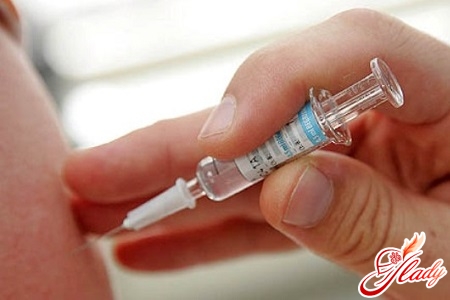
Human papillomavirus (HPV) and its impacton reproductive health is currently one of the most frequently discussed issues. The danger of infection with certain types of the virus for women is well known. And what are the consequences of HPV infection for men? Human papillomavirus infection is considered one of the most common among people. More than 90% of adult men and women are infected with one or more types of HPV. At the same time, most people are unaware of the infection and are clinically healthy. The papilloma virus is transmitted only from person to person through direct contact. The virus lives and multiplies in the epithelium (cells of the integumentary tissue) of the skin and mucous membranes of the mouth, throat, and genitals. A feature of the vital activity of the human papilloma virus is the stimulation of pathological proliferation of cells of infected tissues. As a result, various neoplasms of the skin and mucous membranes occur, including malignant ones.
Types of HPV and their basic properties
Currently, more than 120 types of HPV are known.Different types of the virus cause different types of epithelial damage: from harmless warts to the development of cancer. In this regard, 3 groups of papillomaviruses are distinguished according to the degree of oncogenic risk for the infected person.

Ways of human infection with HPV
Infection with the papillomavirus occurs onlyby direct contact with an infected person through the skin and mucous membranes with their microdamage. Household transmission is very common, since the papilloma virus remains for some time in particles of desquamated epithelium. Infection with HPV types that affect mucous membranes occurs during sexual contact. Therefore, these forms of papillomavirus infection are classified as sexually transmitted diseases and are often combined with other similar infections (chlamydia, mycoplasmosis, trichomoniasis). The likelihood of infection with high-risk human papillomavirus increases with increasing sexual activity and the number of sexual partners. Infection of newborns with HPV during childbirth is possible with the development of laryngeal papillomatosis or anogenital condylomas in infants.
Signs of papillomavirus infection in men
As a rule, men are infected even with oncogenicтипами ВПЧ не несет столь серьезных последствий, как для женщин. В большинстве случаев инфицирование ВПЧ проходит абсолютно бессимптомно и не вызывает никаких болезненных проявлений. При здоровой иммунной системе вирус папилломы человека часто самостоятельно элиминируется из организма или сохраняется в латентной форме. Инфицирование неонкогенными типами вируса в некоторых случаях приводит к появлению папиллом на участках кожи, подверженных трению одеждой (подмышечные, паховые области) или плоских бородавок на коже кистей. Эти симптомы вызваны ВПЧ 2, 3, 5 типов. Возможно возникновение подошвенных или ладонных бородавок, часто болезненных при надавливании утолщений рогового слоя кожи неправильной формы. Их вызывает вирус папилломы человека 1 типа. Описанные симптомы одинаково часто встречаются у мужчин и женщин. Заражение низкоонкогенными типами вируса папилломы 6 и 11 происходит при половом контакте с инфицированным партнером и вызывает развитие остроконечных кондилом в области ануса и гениталий. Это заболевание относится к самым частым проявлениям папилломавирусной инфекции у мужчин. Распространенность его — около 1% сексуально активных мужчин по данным США. Заболевание может возникнуть после длительного (более 3 месяцев) инкубационного периода. Источник инфекции в большинстве случаев установить не удается, так как вирус у многих людей находится в латентном состоянии и не вызывает болезненных проявлений. Остроконечные кондиломы представляют собой кожные разрастания на узкой ножке, напоминающие по форме цветную капусту или гребень, как правило, безболезненные. Расположены у мужчин в области крайней плоти, венечной борозды или ануса. Возможно расположение кондилом в канале уретры (эндоуретральные кондиломы), обычно сочетаются с аногенитальными. Могут вызвать нарушение мочеиспускания и симптомы хронического уретрита. Папилломатоз гортани (ларингеальный), вызываемый вирусом папилломы человека 11 типа, чаще наблюдается у детей до 5 лет. Обычно связан с заражением при родах. Но может встречаться у взрослых, инфицированных при орально-генитальных контактах. Основные признаки ларингеального папилломатоза — осиплость голоса, болезненность и нарушение глотания. Вирус папилломы высокого онкогенного риска может привести у мужчин к развитию рака полового члена, анального рака или рака горла. Аногенитальный рак у мужчин, инфицированных ВПЧ высокого риска, встречается во много раз реже, чем карцинома шейки матки у женщин. Это связано с анатомическими особенностями половой системы. Вероятность заболеть аногенитальным раком зависит от индивидуальной чувствительности к ВПЧ, свойств иммунной системы и некоторых других факторов. Например, анальный рак встречается в 17 раз чаще у мужчин, имеющих сексуальные контакты с мужчинами, а также у инфицированных ВИЧ. Распространенные и трудно поддающиеся лечению формы остроконечных кондилом также чаще встречаются у ВИЧ-инфицированных мужчин. Симптомами анального рака могут быть боль, зуд, кровотечение при дефекации. Иногда симптомы вовсе отсутствуют. Признаками рака полового члена являются утолщение кожи, изменение цвета в виде очага или пятна, позже образование эрозии и кровоточивость, увеличение лимфатических узлов в паху. Злокачественные опухоли глотки и гортани могут быть иногда связаны с некоторыми типами вируса папилломы человека, но большинство этих видов рака ассоциированы с курением и другими факторами. Характерными признаками являются постоянная боль в горле, кашель, изменение или осиплость голоса, нарушение глотания. 
Diagnosis of papillomavirus infection
There is currently no laboratorytest for HPV detection in men. For examination of women, detection of the virus and determination of its type using the polymerase chain reaction method are informative. In laboratory diagnostics, it should be taken into account that more than half of the cases of infection are short-term and the virus, after some time, is spontaneously eliminated from the body. Most men infected with the human papillomavirus will never have health problems associated with HPV. Pointed condylomas are diagnosed by their characteristic appearance during visual examination; to detect endourethral condylomas, if symptoms are present, urethroscopy should be done. Since anogenital condylomas in the vast majority of cases are combined with other sexually transmitted infections, it is advisable to conduct appropriate studies.
Treatment of HPV infection
There are no treatments for papilloma viruses.a person, but there are ways to treat the diseases they cause. The main methods of treating warts and condylomas are surgical: removal with a scalpel, removal with liquid nitrogen (cryodestruction), electrocoagulation, laser coagulation, chemical destruction. A few weeks or months after removal, condylomas may recur, in which case repeated removal will be required. Surgical removal of condylomas does not reduce the risk of infecting a sexual partner, since the virus remains in the human body. Surgical methods are often combined with the use of antiviral drugs and immunostimulants, but the effectiveness of such methods has not been proven in controlled medical studies. Surgical methods, radiation therapy and chemotherapy are used to treat anogenital cancer. Usually these methods are combined.
Methods of preventing papillomavirus infection
The only readily available means of protection againstHPV is a barrier contraception (condom). The method is not very reliable, since HPV sources can be in areas not protected by a condom. However, the method allows you to reduce the likelihood of infection with the papillomavirus and prevent other types of sexually transmitted infections. In Russia, two vaccines are registered for the prevention of HPV infection. The two-component vaccine "Cervarix" prevents infection with the most common oncogenic types of HPV 16 and 18 and prevents at least 85% of cases of cervical cancer. The vaccine is recommended for use by girls from 10 years old and women up to 45 years old. The four-component vaccine "Gardasil", in addition to HPV types 16, 18, protects against infection with types 6 and 11 of the papillomavirus. Thus, in addition to preventing cervical carcinoma, it prevents 90% of cases of anogenital condylomatosis and papillomatosis of the pharynx and larynx. The Gardasil vaccine is recommended for adolescents aged 9-17, including boys, as well as women aged 18-45. The vaccination is performed three times: the initial administration, then after 2 and 6 months. The vaccines do not affect existing papillomavirus infection and are not used to treat it.









